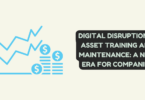
Distance Learning
It is known that the needs of students in education vary from person to person and are hard to identify. However, when it comes to special needs students, it is much harder to understand how they learn and where to start. In this era of the pandemic, all individuals are encouraged to stay at home, but that cannot come in the middle of your little ones’ education. So, although distance learning is challenging for teachers, it is the only solution we have in these challenging times.
Special education teachers are responsible for helping students succeed in accordance with Individual Educational Programs (IEPs), which is a curriculum structured for individualized lessons and face-to-face learning. Distance learning is necessitated due to familiarity with technology but often comes with some challenges faced by students with disabilities. In a classroom environment, special students rely on teachers to guide them navigate these challenges. However, at home, it can be different. Also, within a traditional classroom environment, it is very easy for teachers to identify students’ responses and how they can be assisted in their learning process, but with distance learning, there are certain things that should be improved in order to address students’ needs effectively.
The best way teachers can equip themselves with the necessary skills required to meet the needs of students in the challenging distance learning environment is through continuing education. Look into online teaching special education programs to enhance your teaching abilities, gain foundational knowledge, understand how exceptionalities react and learn how to create a positive and safe environment for students.
However, since you aren’t immediately getting enrolled and completing an online degree, let’s walk through the top three ways teachers can help special needs students with distance learning:
Value the bond more than academic learning:
This is one of the most essential and effective approaches that teachers must take to ensure that all students are on the same page. We all know how difficult it is to facilitate students via distance learning, and it requires even more effort with special students to keep them at the same pace as others. Teachers must tap into their students learning capabilities and not just pressurize them with meeting the academic/syllabus load. We don’t want our children to fall behind academically, but their social and emotional well-being is crucial in this isolation period to keep them motivated for learning. There are many creative ways to make online classes engaging, such as playing minds games, use of colorful props, and including humor, so implement those.
As it is said, “They may forget what you said, but they will not forget how you made them feel,” children tend to always remember how they felt with a person and if teachers can impact their emotional well-being, then learning will become a lot easier. Once teachers are able to form and maintain a healthy bond with their students and make them feel safe, not only do students recognize their efforts but it is said to boost their cognitive capabilities.

Online learning
Having a more democratic approach with students and providing extra material:
We all know that when you give authority to kids on their work, their interest in it grows more as they develop a feeling of association. Similarly, if teachers engage their students more in what they are studying, they will try their best to become more creative at it to please their teachers. This could be done by taking their opinion about what they would like to study, scheduling class timings and activities as per their happiness and also at the beginning of every lecture discussing what children what was covered in the previous lectures to see how much students understood and retained. Another way to improve distance learning can be by providing students with recorded/video lectures. During the class, the teacher has to match the pace of the majority of the students in class; they cannot give special attention to some students or take out time to make their lecture more creative and innovative. As a result, some students can fall behind. Thus, the provision of recorded lectures can act as an extra resource that students, especially those with disabilities, can go through with their parents after class, so they are on the same page as the rest of the students.
Encouraging feedback from guardians and providing them space to discuss the progress:
Since learning can be a very subjective matter for the students, gaining feedbacks from their parents is essential to ensure that the imparted knowledge is delivered and received well by the kids. When parents provide feedback, teachers who cannot obviously assess each student individually in a digital environment can conclude where they can improve and which student to focus on. With this discussion, distance learning will surely improve, and even the satisfaction of parents/guardians will increase as their preferences and advice will be heard. No one knows a kid better than their parents and mentors, so such meetings should be encouraged more by the facilitator.
Conclusion
So, to sum it all up, learning must go on regardless of the age or situation, be it the pandemic or special needs. Distance learning is not just a necessity but the future of education as the world is moving towards advanced technology. Therefore, by following the above-mentioned steps, we can work together to achieve a common goal: the betterment of our children and a bright future based on education. Let distance learning be the new norm and use all the tools available to make it as successful as possible, for it is undoubtedly for a great cause.






